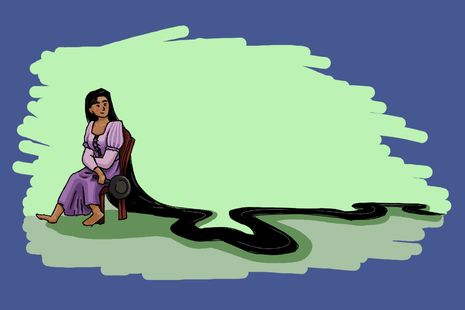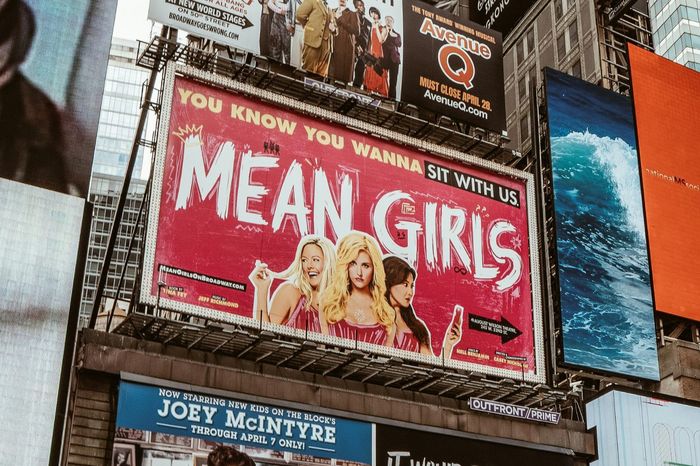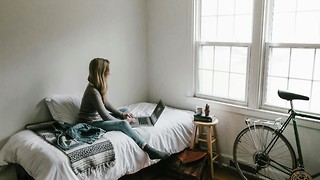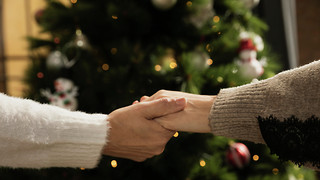The internalised misogyny behind the South Asian Rapunzel ‘culture war’
Natasha Macbeth responds to the backlash surrounding Mean Girls star Avantika Vadanapu’s rumoured casting as Rapunzel

The explosion of indignation at the rumour that Avantika Vandanapu, a brown woman, might play Rapunzel in Disney’s live-action remake has brought an outdated fairy tale back into the limelight. Disney, once again, is embroiled in the modern culture war. The optimist might argue that it’s invested in POC representation, the cynic that it’s using identity politics to cling to cultural relevance…
The dispute takes various forms. Much of it is racist. There’s also a subtler microaggression in the recommendation that brownness be taken elsewhere, that South Asian princesses be written afresh and not cast onto “traditional” (pure?) fairy tales. Conversely, those celebrating Avantika argue that the Rapunzel narrative can be read as South Asian. Many have noted, for instance, that the story originates from the Persian Shahnameh.
“Disney casting Avantika wouldn’t mean weaving Desi culture into the production”
But do these arguments miss the point? Considering how we curate South Asian narratives in the West is undoubtedly important. Yet that isn’t what Rapunzel-gate is about. Firstly, the entire debate is baseless. No live-action is in the works. Still, it’s an interesting theoretical discussion. We know Disney. Their fairy tales have never been about faithful cultural representation, European or otherwise. Indeed, if The Little Mermaid, which cast a black woman without attempting to incorporate her heritage into the scenery or script, says anything, Disney casting Avantika wouldn’t mean weaving Desi culture into the production.
Rather, Disney princesses are marketed as role models. Insofar as Rapunzel is fundamentally a moral character, her race is inconsequent. Brown Rapunzel would still be the “good” protagonist we encountered as children. The anger, then, would suggest we don’t really buy Disney’s moral myth. We recognise, perhaps, that Disney fairy tales, in their commercialised fakelore, cannot function as tools for moral education and community identification in the way folklore does.
What, then, do we really think is at stake?
“The Disney culture wars are fundamentally a battle over who girls are told is beautiful”
Beneath it all, the debate is entirely aesthetic. Disney fairy tales represent a particular imaginary; we’re concerned less with their content than who we see in them. Hence, the Disney culture wars are fundamentally a battle over who girls are told is beautiful. To be beautiful is to be feminine so, once again, we’re policing womanhood.
“But Rapunzel is German!” Believe it or not, Germans can be brown.
“But Rapunzel is blonde!” Firstly, shameless microaggression. Secondly, have you heard of bleaching?
“But Rapunzel’s hair is thick enough for someone to climb!” Surely this one needn’t be spelled out…
I was struck by the intensely personal nature of comments I read online. Adult women expressed their disappointment at the casting of a character intended not to inspire them but their children: “omfg little me is crying.” It all feels slightly ludicrous. Perhaps social media is responsible for these kinds of discussions. As a digital diary, it has become a remarkably candid and personal platform. It has also witnessed the vernacularisation of psychoanalysis; the concept of the inner child is ubiquitous. How these princesses look is considered a reflection of our childhood worth, which we appropriate into our adult psyche. It’s understandable – if not justifiable – that adult women feel indignant. They feel personally affronted or at least their “inner child” does.
“The most pertinent discussion is whether we’ve outgrown the clichéd Disney narrative altogether”
Part of me felt silly writing this article. It all feels so obvious. Internalised misogyny, racist beauty standards, Betty Friedan rolls in her grave etc. And yet we’re constantly encountering the same issues. Women feel pitted against each other, that their self-worth is mutually exclusive with that of another, and thus the logic of patriarchy continues.
In rehearsing these debates, we neglect more pressing issues. Indeed, the more interesting casting decision would be Mother Gothel. Archetypes of female wickedness involve racist, homophobic and classist tropes. Who we consider “ugly” deserves equal – if not more – attention. However, the most pertinent discussion is whether we’ve outgrown the clichéd Disney narrative altogether. Will fairy tales enable queer representation? Will people with disabilities be given their personhood on screen? Is there space for real people and truly representative stories?
Of course, newer Disney films have attempted to address social issues. Encanto depicts a multi-generational family system; Frozen’s true love’s kiss is between sisters; Moana’s quest to save her island can be read as anti-colonial. Yet Disney’s reproductions of old fairy tales make no pretence of retelling and repurposing. It’s all very surface-level. It’s about seeing and being seen.
It’s about seeing a brown woman. At the centre of all this is a real person called Avantika, whose own being we neglect in using her as a canvas for our racial insecurities. I’m unconvinced that South Asian cultural representation is really what’s at stake. Rather, we’re demarcating what is and isn’t beautiful, once again aggregating what women “should” be. After all, no-one’s losing sleep over Flynn Rider’s race.
Hating other women is sooo second wave. Surely we’re past this? It’s all made-up anyway but a brown Rapunzel would be a joy.
 News / Cambridge students accused of ‘gleeful’ racist hate crime4 December 2025
News / Cambridge students accused of ‘gleeful’ racist hate crime4 December 2025 News / Uni redundancy consultation ‘falls short of legal duties’, unions say6 December 2025
News / Uni redundancy consultation ‘falls short of legal duties’, unions say6 December 2025 News / Churchill announces June Event in place of May Ball3 December 2025
News / Churchill announces June Event in place of May Ball3 December 2025 News / Cambridge cosies up to Reform UK30 November 2025
News / Cambridge cosies up to Reform UK30 November 2025 Comment / Don’t get lost in the Bermuda Triangle of job hunting 24 November 2025
Comment / Don’t get lost in the Bermuda Triangle of job hunting 24 November 2025










